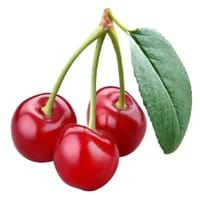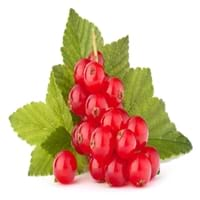Health Benefits
Arthritis prevention, Cancer prevention, Gout treatment, Regulation of heart rate, Treatment of osteoarthritis
Cancer prevention, Gout treatment, Heart care, Regulation of heart rate, Treatment of rheumatism
General Benefits
Anti oxidant properties, Anti-inflammatory properties, Controls blood pressure, Cures headache, Digestive aid
Anti oxidant properties, Controls blood pressure, Cures fever, Digestive aid, Healing of wounds, Helps in weight loss, Strengthens bones
Skin Benefits
Anti-aging benefits, Brightens and lightens complexion, Skin rejuvenation, Treatment of dark spots
Brightens and lightens complexion, Reduces wrinkles, Treatment of acne
Hair Benefits
Acts as moisturizer, Protects hair, Regulates hair growth, Rejuvenates scalp
Protects hair
Allergy Symptoms
Anaphylaxis, Breathing difficulty, Fainting, Itching, Nasal congestion, Nausea, Swelling of mouth, tongue or lips, Tingling sensation in mouth, Vomiting, Wheezing
Abnormally rapid heart rate, Anaphylaxis, Breathing difficulty, Hives, Itching, Swallowing difficulties
Side Effects
Abdominal cramps, Allergic reaction, Bloating, Intestinal gas
Possibly unsafe during pregnancy
Best Time to Eat
Best if taken as a breakfast (or empty stomach), As a snack in the late afternoon, Don't eat after meal, Morning time (before lunch)
Best if taken as a breakfast (or empty stomach), As a snack in the late afternoon, Don't eat after meal, Morning time (before lunch)
Vitamin B5 (Pantothenic Acid)
Vitamin C (Ascorbic Acid)
Vitamin K (Phyllochinone)
Calories in Fresh Fruit with Peel
Calories in Fresh Fruit without Peel
Not Available
Not Available
Calories in Frozen Form
Not Available
Calories in Canned Form
Not Available
Varieties
Evan, Mesabi, Meteor, Northstar, Montmorency and Mongolian
Rovada, Stanza, Red Lake, Junifer and Jonkheer van Tets
Taste
Sweet-Sour
Sour, Tart
Origin
Europe, Western Asia
Europe
Soil Type
Sandy
Moist, Well-drained
Climatic Conditions
Cold
Cold
Facts about
- Using 1/4 tablespoon of almond extract with cherries, brings out the real flavor of cherries.
- In earlier times, serving cherry pie with ice cream was prohibited.
- 23 April is National cherry cheese cake day.
- The albino version of red currants known as white currants, are often sold as different fruit.
- Red currant tea is healthy substitute for coffee.
- There are more than 150 varieties of red currants.
Top Producer
Turkey
Russia
Other Countries
Albania, Armenia, Austria, Azerbaijan, Belarus, Croatia, Denmark, Germany, Hungary, Iran, Italy, Macedonia, Moldova, Poland, Russia, Serbia, Ukraine, United States of America, Uzbekistan
Belgium, France, Germany, Ireland, Italy, Netherlands, Poland, Portugal, Scotland, Spain, Sweden, United Kingdom
Top Importer
Germany
Germany
Top Exporter
Poland
Russia
Botanical Name
Prunus cerasus
Ribes rubrum
Synonym
Not Available
Not Available
Subkingdom
Tracheobionta
Tracheobionta
Division
Magnoliophyta
Magnoliophyta
Class
Magnoliopsida
Magnoliopsida
Order
Rosales
Saxifragales
Family
Rosaceae
Grossulariaceae
Species
P. cerasus
R. rubrum
Generic Group
Rose
Saxifrage
Difference Between Sour Cherry and Red Currant
We might think that Sour Cherry and Red Currant are similar with respect to nutritional value and health benefits. But the nutrient content of both fruits is different. Sour Cherry and Red Currant Facts such as their taste, shape, color, and size are also distinct. The difference between Sour Cherry and Red Currant is explained here.
The amount of calories in 100 gm of fresh Sour Cherry and Red Currant with peel is 50.00 kcal and 56.00 kcal and the amount of calories without peel is Not Available and Not Available respectively. Thus, Sour Cherry and Red Currant belong to Low Calorie Fruits and Low Calorie Fruits category.These fruits might or might not differ with respect to their scientific classification. The order of Sour Cherry and Red Currant is Rosales and Saxifragales respectively. Sour Cherry belongs to Rosaceae family and Red Currant belongs to Grossulariaceae family. Sour Cherry belongs to Prunus genus of P. cerasus species and Red Currant belongs to Ribes genus of R. rubrum species. Beings plants, both fruits belong to Plantae Kingdom.









